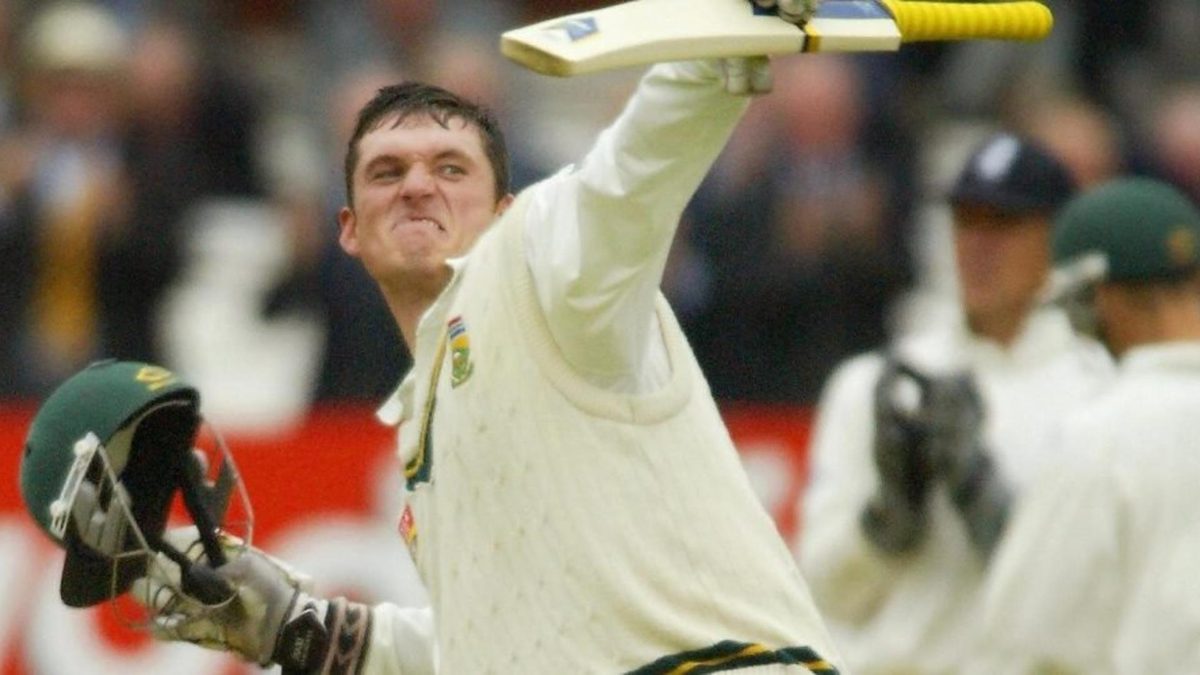
Taking South Africa’s captaincy during tough times, Graeme Smith excelled both as a player and a leader during the 2003 English summer. He was named a Wisden Cricketer of the Year the following spring.
Graeme Smith scored 9,265 runs at 48.25 from 117 Tests, captaining the side in 109 of them – a record. In 197 ODIs, 150 of which he was the captain, he scored 6,989 runs at 37.98.
Captaining one’s country can be a hard road. Captaining South Africa is the hardest road of all. This is a country that still defines itself, to some extent, by sporting success. But that is not enough any more: success must be achieved alongside the fulfilment of the hopes and dreams of all its people, with the long-term prosperity of a much-changed nation in mind. A year ago these attendant pressures left South African cricket in a mess.
An ill-chosen World Cup squad played nervously and, in farcical circumstances, was bundled out of the preliminary stages of the competition. Shaun Pollock was unceremoniously sacked as captain. In advance, half the team had dedicated their imagined World Cup triumph to their former captain Hansie Cronje, who was disgraced before he was killed in a plane crash. South African cricket needed urgent regeneration, and it was to a 22-year-old man, with minimal international experience, that they turned to.
The cricketing world was incredulous. When the team began their 2003 tour to England, Graeme Smith was patronised and derided. People said he would have to learn the hard way. When South Africa were thrashed in the NatWest Series final, he did. But then came the Test series and Edgbaston and Lord’s. He imposed his will upon England emphatically with compassionless innings of 277, 85 and 259. Never had the tone for a series been set so devastatingly.
Smith took on and crushed all comers. His body language in the field contrasted sharply with the two England captains on show, Michael Vaughan and Nasser Hussain. Hussain, plainly worried that he had “lost” his team at Edgbaston, veered between a Zen-like calm and indignant intensity. At the end of the game, he resigned. Vaughan, at first, looked lost in his new role. Though six years older than Smith, he seemed like the tyro. His opponent, throughout, gave the impression of confidence, optimism and certainty.
***
Graeme Craig Smith was born on February 1, 1981 in Johannesburg, the son of Graham, an electrical engineer, and Janet, a draughtswoman. Smith played provincial soccer until 14 and represented his school at rugby. Cricket, though, was always the thing. At the age of 19, Smith scored 187 on his first-class debut and stuck a series of short things were ingrained from the start: the traditional middle-class values of, medium- and long-term goals to his fridge; he had achieved the lot within three years. To captain South Africa was the ultimate. “I’ve been dreaming of this moment all my life,” he said when given the job.
At a stroke, Smith’s appointment allowed South Africa to leave behind the two issues that have dogged the team. He was only nine when Nelson Mandela was released from jail and spent his teenage years, at King Edward’s School in Johannesburg, in a society that had moved on from apartheid. Unlike the previous generation, he had no reason to feel guilty and no need to look back. He was the perfect age to mould a team that could be representative of all South Africans. He was also free of the more recent taint: he had never played with or against Hansie Cronje.
It was apparent that Smith was a remarkable young man. His captaincy was not overly adventurous – it can be placed squarely in the dour tradition of South African captains – but immediately it was clear that he brought his whole being to the job, and that he gave every ounce of energy to his team. Ruthlessness is a necessary quality for a successful captain, and Smith signalled his intentions before the tour with the omission of Lance Klusener, announcing that Klusener was a bad influence on the team and that his ability was on the wane. Such openness came to be Smith’s calling card throughout the tour of England. He looked everyone in the eye and said what he thought. (By early 2004, Klusener was back in the side, but Smith’s authority was no longer in question.)
https://www.youtube.com/watch?v=8bySE4qDCJ8
During the one-day games in England there were mutterings about Smith’s “closed-face” technique and propensity to play across the line, but he soon silenced the doubters, gloriously. The series was not yet halfway through and England were sick of the sight of him and still trying to work out any plan at all. He is leg-side dominant, unlike many other left-handers, but with an ability to cut the ball well outside off stump. Throughout most of the series, England’s fielders in the slips waited in vain; by not opening the face he made them redundant.
His casual attitude towards sledging and on-field aggression is an anachronism, a throwback to the late 1980s before match referees were brought in to clean up the game. Rightly, he wants to emulate the success of the Australians. He did it without imitating their worst excesses too.








